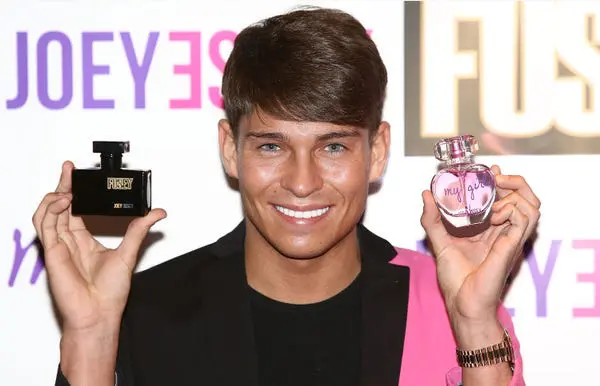The world of celebrity culture is often as bizarre as it is fascinating. Within this realm lies the intriguing practice of insuring body parts, something that may sound absurd at first yet has become a common trend among the famous elite. Recently, the spotlight has shone brightly on Taylor Swift, whose legs are allegedly insured for a staggering $40 million. But how did we arrive at this unusual valuation, and what other body parts have been insured by celebrities?
This exploration will take you through the world of celebrity body part insurance, shedding light on its history, the most famous cases, and the innate ridiculousness that often accompanies such valuations. Along the way, we will delve into the reasons why these policies exist and what they signify in the grand scheme of fame and fortune.
The History of Insuring Celebrity Body Parts
The concept of insuring body parts is not a new phenomenon. Its origins can be traced back to the early 20th century when famous figures began seeking financial protection against potential accidents. The first recorded instance of a celebrity insuring a body part was when actress Betty Grable took out a policy with Lloyd’s of London to safeguard her legs for $1 million in 1940, a figure that was astonishing for that era.
This practice has since evolved into a bizarre yet lucrative market, with many modern celebrities following suit. Lloyd’s of London has become synonymous with celebrity insurance, and they continue to be the go-to insurer for stars looking to protect their most valuable assets. Various risks come into play when insuring body parts—accidents, injuries, and even performance-related issues, which can significantly impact a celebrity’s career.

The Rise of Celebrity Body Part Insurance
Anecdotes abound regarding the whims of the rich and famous when it comes to their physical attributes. From singers to actors to athletes, the trend of insuring body parts has gained traction. Take, for instance, the case of Gordon Ramsay, who famously insured his tongue for $10 million, underscoring the importance of this organ in his culinary empire. As the face of culinary television, losing his ability to taste would spell disaster for his career.
In fact, various other entertainers have followed this peculiar trend. America Ferrera insured her smile for $10 million, while models like Heidi Klum and Rihanna ensured their legs for $2 million and $1 million, respectively. Each case unveils a story of how crucial these attributes are to their public personas and professional success.
The Role of Publicity Stunts
As intriguing as these policies might be, many raise eyebrows due to their origins often rooted in publicity stunts. For instance, Nick Cannon, known for his showbiz antics, claimed to have insured his reproductive organs for $10 million, a declaration that many viewed as a marketing gimmick rather than genuine insurance need. This leads to the question of how much of this insurance is truly serious and how much is simply a play for attention.
Consider also the story of Keiran Lee, a star in the adult film industry, who had his most prized body part insured for $1 million, creating a playful narrative around the exaggerated insurance value. Anecdotes like this not only keep the public entertained but also contribute to the larger narrative of celebrity culture, where self-promotion and shock value are often intertwined.
Taylor Swift’s $40 Million Legs
Among the most shocking claims in the world of celebrity insurance is the reported $40 million policy protecting Taylor Swift’s legs. This astonishing figure reportedly stems from her immense fame and influence in the music industry, culminating in the decision to protect her most iconic asset ahead of her 1989 tour.
The origins of this claim date back to The National Enquirer, highlighting how sensationalism often sparks conversations around such topics. While Swift has neither confirmed nor denied this valuation, she cheekily addressed it through a humorous tweet, showcasing her playful personality even in the face of absurd claims. Swift’s reply—an image of her scratched leg along with a cat reference—went viral, further cementing her reputation as someone who doesn’t take herself too seriously.

The Value of Celebrity Body Parts
The question arises, why are Taylor Swift’s legs worth such an exaggerated amount? The potency lies not just in their physicality but in what they represent: brand, iconography, and cultural impact. For many celebrities, body parts symbolize their entire careers. Taylor’s legs, when protected by such a hefty policy, essentially signify her marketability as an artist.
This valuation isn’t merely about the physical; it’s tied intricately to the breed of celebrity culture, where appearances can lead to vast financial rewards. This playful culture extends well beyond Taylor, encompassing various stars who have become household names due to specific attributes, whether it’s J.Lo’s behind or Bruce Springsteen’s iconic voice, which was purportedly insured for $6 million—although details remain unofficial.
The Ethics and Absurdity of Body Part Insurance
As entertaining as this all may be, the ethics surrounding insuring body parts can be contentious. Some critics argue that it perpetuates a focus on superficial attributes, reducing individuals to their physical assets. Moreover, the absurdity of the valuations often raises questions about the world’s priorities, especially in a time when many are calling for shifts in societal values.
However, there’s an undeniable charm in the melodrama of celebrity insurance stories. For every eye-roll induced by a high-profile celebrity claiming their body part is worth millions, there are collective chuckles shared over just how ridiculous it all is. This odd juxtaposition of fame, wealth, and the necessity to safeguard vanity encapsulates an entire industry driven by image.
Pop Culture References and Implications
The implications of celebrity body part insurance extend into broader discussions about celebrity culture and the commodification of the human experience. It raises questions that resonate beyond entertainment: How do we value individuals in our society? Are we reducing people to their most marketable assets?
Moreover, how these values have transitioned from mere vanity to lucrative business decisions reflects changing perceptions of fame and public persona. As society continually reshapes its cultural norms, discussing the worth of body parts may seem trivial but it illuminates significant insights into how we perceive worth.
From models like Heidi Klum to entertainers like Lady Gaga, body part insurance represents an evolving landscape where fame and financial security are inextricably linked, sparking curious conversations that entice both admiration and ridicule.
Public Reactions to Body Part Insurance
Public reactions often vary dramatically when it comes to celebrity body part insurance. For some, the mere idea is hilarious; for others, it’s a reflection of societal values gone awry. Social media buzzes with reactions, memes, and comedic takes that swiftly spread, often overshadowing the legacies of many of the insured assets themselves.
Indeed, the conversation around Taylor Swift’s legs quickly transcended mere absurdity. It became a moment of reflection on celebrity culture, as audiences debated values and priorities in entertainment. The frenzy of public interest often results in celebrities becoming figures of both admiration and derision.

Memes and Pop Culture
Pop culture thrives on satire, and the world of celebrity insurance is no exception. The memes mocking the ludicrous values assigned to body parts proliferate online. Platforms like Twitter and Instagram buzz with humorous content that juxtaposes the bazaar with the mundane, as users create relatable content that brings to light the absurdities of fame and fortune.
These reactions foster community engagement. Fans both celebrate and criticize their idols while making light of the outrageous scenarios. Whether it’s a quirky tweet about Taylor Swift’s legs or a satirical meme about how celebrities ensure their noses, these interactions reveal a layered understanding of social media’s influence on public perception.
The Future of Celebrity Body Part Insurance
As we look ahead, the landscape of celebrity insurance is bound to evolve. With the rise of social media influencers and digital celebrities, the standards of value and importance may continue to shift. Insights show that these new digital personalities may begin to seek protection for attributes that resonate with their online brands.
This change could lead to even more unexpected instances of body part insurance, as the lines between traditional celebrity and online personality blur. While this might sound ludicrous to some, it reflects a society where social currency is directly tied to appearance and allure.

Potential Trends in Body Part Insurance
The future might see more celebrities opting to insure unconventional body parts. Given the ongoing dialogues about body positivity and self-acceptance, insurance policies may even pivot towards valuing less conventional attributes. This could open up discussions about the worth of personality and talent over physical appearance, presenting a compelling shift in celebrity culture.
Moreover, as society continues to challenge traditional beauty standards, the conversations surrounding body part insurance could serve as a catalyst for broader societal change, ultimately redefining what constitutes value in our increasingly image-driven world.
Conclusion: A Cultural Reflection
Ultimately, the bizarre practice of insuring celebrity body parts, notably Taylor Swift’s legs, extends beyond mere frivolity. It embodies the complexities of fame, public persona, and worth in contemporary society. As we navigate this cultural landscape, the discussions sparked by these valuations prompt us to consider deeper implications regarding how we view ourselves and others in a celebrity-obsessed world.
Source: www.hollywoodreporter.com
Hi, I’m Sarah, a 30-year-old journalist with a passion for storytelling and uncovering the truth. I strive to bring important issues to light and connect with my audience through compelling narratives.



